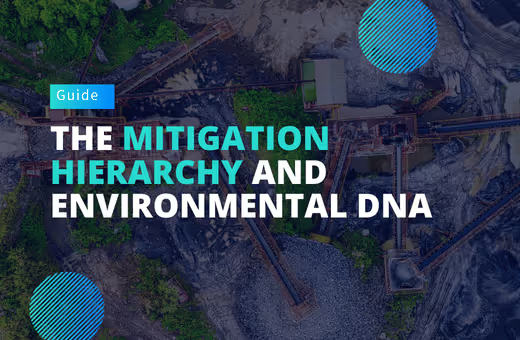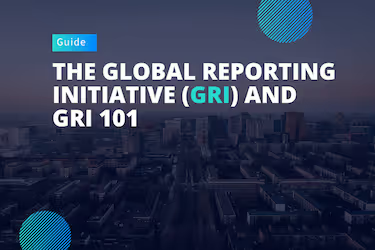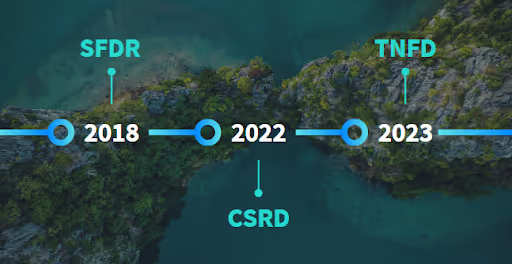As companies increasingly recognize the importance of aligning corporate strategies with global biodiversity conservation, SBTN stands out as a powerful framework recommended by the Task Force onNature-related Financial Disclosures (TNFD).
Science-based targets for climate are relatively established, with over 900 companies committing to actions aligned with the Paris Agreement (eg keeping warming to1.5°C above pre-industrial levels). This is not the case for nature, where target setting is more challenging and less mature.
The goalof SBT for Nature are to “give companies and cities a clear pathway to competitiveness and resilience by using science to define their role in protecting and restoring nature. Reversing nature loss in line with science will create a future of resilient businesses, healthy cities and sustainable economies.”
Part of this requires downscaling global goals to organisational level, allowing company leaders to set measurable, achievable and proportional targets that contribute to a shared global goal.
But what does this mean for nature?
Key Dimensions of Science-Based Targets for Nature
The three key dimensions of SBT for Nature, agreed through the Convention on Biological Diversity (CBD), are:
- Ecosystem Integrity: Focusing on area, connectivity, and overall health of ecosystems.
- Species Conservation: Addressing the percentage of threatened species.
- Biodiversity Abundance: Maintaining and enhancing species populations.
Strategic implications for businesses:
- Holistic Environmental Management: SBTs for nature extend beyond climate, incorporating freshwater, biodiversity, land, and ocean conservation. This comprehensive approach allows companies to address environmental risks systematically across their value chains.
- Localised Approach: Unlike climate-focused SBTs, which use standardised carbon metrics, nature-based targets require a more nuanced, geographically-specific methodology. This necessitates a deeper understanding of local ecosystems and biodiversity impacts.
- Measurement and Metrics: The STAR (Species Threat Abatement and Restoration) metric, coupled with land occupancy assessments, is emerging as a robust framework for quantifying biodiversity impact across complex value chains.
- Action Framework: The AR3T model (Avoid, Reduce, Restore & Regenerate, Transform) provides a structured approach for companies to implement nature-positive strategies, building on the established mitigation hierarchy.
Preparing for Implementation:
Despite the absence of regulatory drivers, prudent companies should take action to de-risk operations. Indeed, many companies are already implementing SBTs for Nature in response to investor and consumer expectations, business innovation, stakeholder engagement, and managing supply chain resilience.
Recommended actions include:
- Capacity Building: Invest in training and awareness programmes to build internal expertise and stakeholder buy-in.
- Risk Assessment: Conduct comprehensive mapping of biodiversity risks across the value chain, with a focus on materiality.
- Footprint Quantification: Utilise sector-specific tools and metrics to measure current biodiversity impact.
- Strategy Development: Leverage the AR3T framework to identify concrete actions both within and beyond the immediate value chain.
Alignment Between SBTN and TNFD
The Taskforce on Nature-related Financial Disclosures (TNFD) is a global, market-led initiative established to develop and deliver a risk management and disclosure framework for organizations to report and act on evolving nature-related risks. It provides guidance for corporations and financial institutions to assess, manage, and report on their dependencies and impacts on nature
The TNFD and SBTN frameworks share complementary objectives aimed at achieving nature-positive outcomes, albeit with distinct purpose. This alignment mirrors the established relationship between the Task Force on Climate-related Financial Disclosures (TCFD) and the Science Based Targets initiative (SBTi) for climate-related issues.
The goal is to enhance operational efficiency for end users as they concurrently use both frameworks to fulfill their respective aims of disclosure and target setting and implementation.
Some of the areas you should look to integrate TNFD and SBT include:
Integrated Framework Implementation
Action Steps:
- Conduct a gap analysis of your current sustainability reporting and target-setting processes against both TNFD and SBTN requirements.
- Develop a roadmap for integrating both frameworks, identifying areas of overlap to streamline efforts.
- Establish cross-functional teams to address the interconnected nature of TNFD disclosures and SBTN target-setting.
Data Collection and Management
Key Actions:
- Audit existing data sources and identify gaps in relation to both TNFD and SBTN requirements.
- Implement a centralized data management system that can serve both frameworks.
- Prioritize data collection efforts based on the common outputs required by both TNFD LEAP and SBTN approaches: a) Spatialisation of corporate activities b) Environmental footprint estimation c) Identification of issues and locations requiring management targets d) Prioritized list of locations for action
Leveraging SBTN Steps for TNFD Compliance
Practical Application:
- SBTN Step 1 (Assess) and Step 2 (Interpret & Prioritise): Use outputs to inform TNFD's Locate and Evaluate phases.
- Action: Map your value chain impacts and dependencies on nature, identifying hotspots.
- SBTN Step 3 (Measure, Set & Disclose): Align with TNFD's Evaluate and Prepare phases.
- Action: Set science-based targets for nature that can be disclosed in line with TNFD recommendations.
- SBTN Steps 4 (Act) and 5 (Track): Utilize for TNFD's Prepare phase.
- Action: Develop action plans and monitoring systems that serve both target achievement and disclosure requirements.
Stakeholder Engagement and Disclosure
Strategy:
- Develop a comprehensive stakeholder engagement plan that addresses both TNFD and SBTN requirements.
- Create integrated reporting templates that satisfy disclosure needs for both frameworks.
- Conduct regular stakeholder feedback sessions to refine your approach to nature-related issues and targets.
Risk and Opportunity Assessment
Integrated Approach:
- Use SBTN materiality screening (Step 1a) to inform TNFD's risk and opportunity identification process.
- Align your enterprise risk management framework to incorporate nature-related risks identified through both SBTN and TNFD processes.
- Develop scenario analyses that consider both target trajectories (SBTN) and potential financial impacts (TNFD).
Target Setting and Performance Management
Actionable Steps:
- Utilize SBTN's five-step approach to set robust, science-based targets for nature.
- Ensure targets are specific, measurable, and time-bound, aligning with TNFD's disclosure requirements.
- Develop a performance management system that tracks progress against SBTN targets and informs TNFD disclosures.
Capacity Building and Internal Alignment
Key Initiatives:
- Conduct training sessions on both SBTN and TNFD frameworks for relevant teams (sustainability, finance, risk management, operations).
- Develop internal guidelines that explain how the two frameworks complement each other and how to leverage their alignment.
- Create a cross-functional "Nature Task Force" to oversee the integrated implementation of both frameworks.
Technology and Tools
Practical Considerations:
- Evaluate and invest in tools that can support both SBTN target-setting and TNFD disclosure requirements.
- Consider geospatial tools for location-based assessments required by both frameworks.
- Implement or upgrade sustainability management software to handle the data requirements of both SBTN and TNFD.
Supply Chain Engagement
Strategic Actions:
- Develop supplier engagement programs that address both SBTN target-setting and TNFD disclosure requirements.
- Create supplier scorecards that integrate nature-related metrics aligned with both frameworks.
- Collaborate with key suppliers on joint initiatives that contribute to SBTN targets and improve TNFD disclosures.
Continuous Improvement and Adaptation
Ongoing Process:
- Stay informed about updates to both SBTN and TNFD frameworks through their respective websites and publications.
- Participate in industry working groups or pilot programs to share experiences and learn best practices.
- Regularly review and adjust your integrated approach based on new scientific insights, stakeholder feedback, and framework updates.
Organisations planning to implement these steps will place themselves on the path to creating a robust, integrated approach to nature-related targeting setting and disclose that effectively leverages the alignment between SBTN and TNFD.
For support in developing this, speak with our nature strategy team.
How does NatureMetrics support biodiversity frameworks and standards
All major biodiversity frameworks and standards (TNFD, SBTN, GRI, CSRD, and SFDR) ask for site-level Ecosystem Condition measurements. They also all require Narrative disclosures of business plans for managing biodiversity, identifying Proximity of Locations of sites to sensitive biodiversity areas, and changes in Habitat Extent through time.
CSRD has a particularly large emphasis on site-level disclosures, with NatureMetrics providing a solution for >75% of its monitoring and disclosure requirements.
New assessment by EFRAG demonstrates a high level of interoperability between TNFD and ESRS, with 14 of the TNFDs recommended disclosure points required under ESRS. Many of the principles are replicated including the LEAP framework and double materiality assessment. These include:
- LEAP Framework: Under ESRS, companies are allowed to conduct their materiality assessments for pollution, water, biodiversity, ecosystems and circular economy using the LEAP framework.
- Double Materiality: Double materiality – whereby companies assess the impact of a risk on their financials as well as the planet – is integrated across both frameworks. While required under ESRS, this is set out as an option within TNFD.
- Four Disclosure Pillars: Both frameworks are organized around the same four disclosure pillars - governance, strategy, risk management, and metrics and targets.
NatureMetrics support you through the LEAP framework in the following ways:
- Locate your interface with nature: Our experts can map your business assets across your value-chain, and identify any high-risk areas based on proximity to biodiversity-priority areas.
- Evaluate impacts and dependencies: We identify impacts and dependencies across your value-chain and understand where data gaps lie in existing operations to monitoring impacts and dependencies going forward.
- Asses risks and opportunities: We help you identify risks and opportunities, prioritising sites based on their location in high-risk areas related to impacts and dependencies.
- repare (set targets and respond): We help align your targets with frameworks like SBTN. We build customised monitoring and evaluation frameworks leveraging eDNA technology to generate the robust, standardised data needed for tracking performance against targets.












.png)


